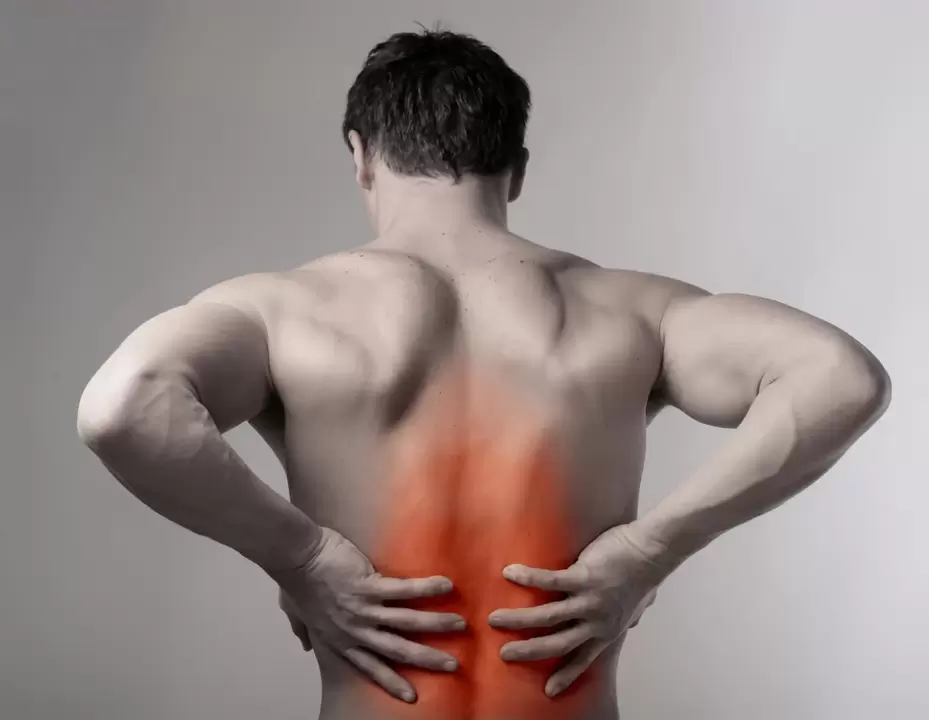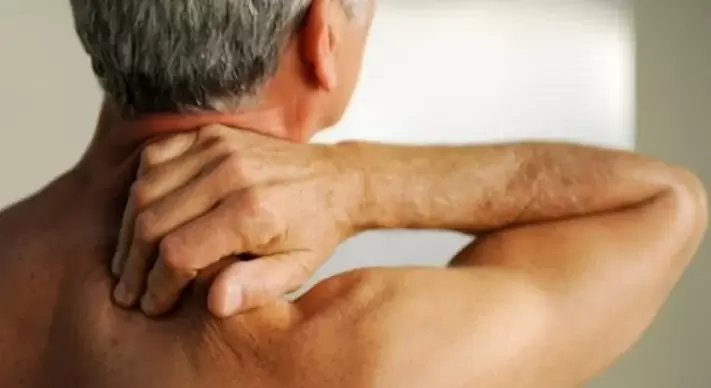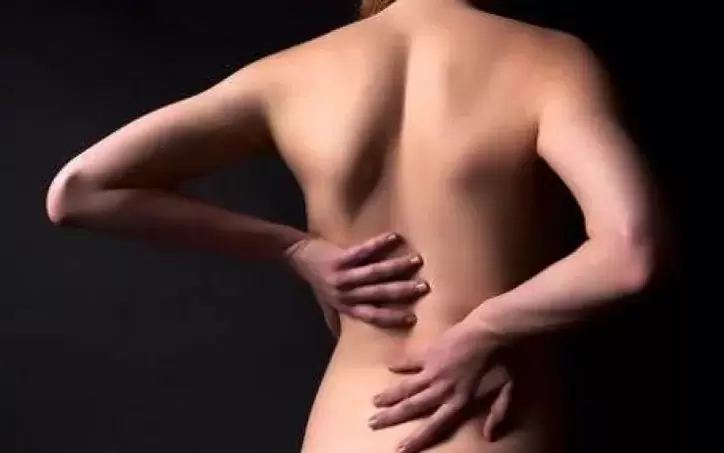
Osteochondrosis is a disease based on degenerative-dystrophic changes that occur in the intervertebral discs, vertebrae, and small joints of the spine. Osteochondrosis is a faithful friend of the elderly. But more and more often young people are diagnosed, which may be due to inactive work, unhealthy lifestyle, and little physical activity. We can assume that most of the adult population has signs of osteochondrosis.
The reasons
The elasticity of the spinal column, its mobility and ability to withstand physical activity, mainly depends on the condition of the intervertebral disc. The pathological process in osteochondrosis is based on malnutrition of the spinal structures, in particular the intervertebral discs. This leads to a change in the normal structure of the tissue, the intervertebral disc loses its elasticity, changes its shape. Such metamorphosis leads to narrowing of the intervertebral disc and, as a result, compression of the nerve root. In fact, these changes explain the appearance of neurological symptoms, in particular, back pain in osteochondrosis.
In the future, degenerative processes occur in the small joints of the spine, bone growth is formed on the surface of the vertebrae. All these changes lead to a decrease in the flexibility of the spinal column.
Similar transformations of cartilage and bone tissue are the result of physiological aging of the body. But under the influence of certain unfavorable factors, dystrophic changes in the intervertebral joints occur ahead of time. These factors include:

- Obesity;
- Sedentary lifestyle;
- Hard physical work;
- Professions characterized by prolonged standing or sitting during working hours;
- Flat feet, foot valgus deformation;
- Defects of the spine;
- Autoimmune connective tissue disease;
- Fluctuations in the hormonal background (pregnancy, menopause);
- Doing great sports;
- pressure;
- Spinal injury, etc.
Types of osteochondrosis
The characteristics of the clinical picture of this disease depend on the specific segment of the spinal column in which the pathological process arises.There are the following types of osteochondrosis:
- Cervix;
- Thorax;
- Lumbar.
Cervical osteochondrosis
Osteochondrosis of the cervical region is common. The muscular skeleton of the neck is relatively underdeveloped, therefore, against the background of osteochondrosis, even with an insignificant load, the vertebrae are displaced and, as a result, the vessels and nerves of the neck are compressed. This explains the specifics of the clinical picture in osteochondrosis of the cervical region.
So, the main signs of cervical osteochondrosis include:
- Constant pain in the neck and occipital region, aggravated by movement in the neck;
- Hemicranial type pain - in one hemisphere;
- dizziness, tinnitus;
- Pain in the hand;
- Numbness and tingling in the hands.
Thoracic osteochondrosis
The defeat of osteochondrosis of the thoracic region is quite rare. The main prerequisite for the development of this disease is the presence of a spinal deformity.
Symptoms of thoracic osteochondrosis:
- Dull, aching pain in the chest, which is often girdle-like;
- Increased pain when turning the body, sneezing, coughing, laughing;
- Visceral pain in the region of the heart, right hypochondrium, abdomen;
- Numbness, paresthesia on the skin of the chest.
Lumbar osteochondrosis
The most common variant of osteochondrosis. This may be due to the fact that the greatest load falls directly on the lumbar region. Symptoms of lumbar osteochondrosis:
- Pain, less often acute pain in the lower back, increases with movement or prolonged exposure to a static position;
- Feeling of stiffness in the lower back;
- To reduce pain, a person takes a forced position;
- Pain or sharp pain (such as lumbago) in the buttocks, thighs, lower legs;
- Tingling, paresthesia in the legs.
%20with%20lumbar%20osteochondrosis.webp)
Diagnosis of osteochondrosis
Radiation methods are used to detect osteochondrosis: radiography, calculation and magnetic resonance imaging of the spine. The most characteristic and, importantly, an early sign of osteochondrosis is a decrease in the height of the intervertebral space.
In the final stages of the degenerative process, marginal growths (osteophytes) appear on the surface of the vertebrae. They are easier to detect on lateral radiographs because the osteophytes are located in front and behind the vertebrae.
In addition, with osteochondrosis, adjacent vertebral bodies are displaced, which can also be determined on x-rays.
Treatment of osteochondrosis
Treatment of osteochondrosis is more effective the earlier it is started. As already mentioned, osteochondrosis is a change in the structure of the intervertebral discs, vertebrae. Unfortunately, many people ignore back pain for a long time and do not see a doctor in time, losing time when it is still possible to stop the pathological process.
Treatment of osteochondrosis is carried out with the help of drugs, physiotherapy exercises, massage, surgery.
Medical therapy:
- Non-steroidal anti-inflammatory drugs in the form of tablets, ointments, injections for pain relief;
- Relax the muscles;
- Chondroprotectors - promote the regeneration of damaged cartilage;
- Complex of vitamins and minerals;
- Vasodilator drugs;
- Drugs that normalize tissue metabolism.
After eliminating the exacerbation of the disease, you should continue the recovery. So, physical therapy is a very important aspect in the fight against osteochondrosis. Doing certain exercises contributes to the formation of a muscle corset. This is very important, because it is thanks to the strong muscle corset that the physical load is distributed evenly along the spine. With regular performance of a set of exercises, stiffness in the spine will disappear, and the range of motion will increase. Massage, physiotherapy, reflexology and spinal traction will help increase the effect of physiotherapy exercises.
When complications appear in the form of intervertebral hernia, sciatica, and if conservative treatment fails, they resort to surgical intervention. The goal of surgical treatment is to eliminate compression of nerve roots and blood vessels, as well as to stabilize the structure of the intervertebral disc or vertebrae.
Treatment of osteochondrosis at home
Folk remedies will help relieve the symptoms of osteochondrosis, but they will not be able to replace primary treatment. On the Internet you can find a large number of alternative treatment methods, but not all of them are safe, so be sure to consult your doctor.
Traditional medicine

The general principle of folk treatment of osteochondrosis is the use of substances that have an irritating effect. As a result, there is an increase in blood supply in certain areas of the body, as well as a decrease in pain.
In folk medicine, such a rubbing recipe is known: mix 0. 25 cups of vodka with 0. 5 cups of honey, add 0. 75 cups of grated radish, and two tablespoons of salt. With the resulting mixture, it is necessary to rub the area that bothers the back twice a day. The procedure must be repeated within a week.
To relieve pain, you can use a potato compress on your back. Grated raw potatoes must be mixed with honey in equal proportions. Then wrap the resulting mixture in gauze, attach it to the back and wrap it with a scarf. You can also use a compress with burdock. To prepare it, pour a glass of boiling water over a spoonful of finely chopped burdock leaves. Wrap the mixture in gauze and apply to the back for half an hour. After removing the compress, be sure to wrap your back with a warm scarf.
You can do it more easily: grate a carrot, put it in a cotton stock, and then lie on it.
Notes:
it is important to be careful when using folk remedies, do not touch your face with your hands. Radishes and other plants, if they come into contact with the eyes, can cause corneal burns.
Physiotherapy
Physical training can be done only outside the period of exacerbation. In acute pain, you should refrain from doing gymnastics, as this will only lead to an increase in pain.
An example set of exercises might look like this:
- Lie on your back and straighten your legs. Pull the toes of the right foot toward you, and the toes of the left foot away from you. This must be done in order.
- Lie on your back, place your hands behind the back of your head. The legs must be together and bent at the knees. The knees should be tilted to the left, and the head should be turned in the opposite direction. Hold for a few seconds. Then move your knees to the right and your head to the left.
- Lie on your back, arms along the body. You need to bend your knees and raise your pelvis. Stay in this position for a few seconds. As you exhale, lower your pelvis.
- Roll onto your side. Straighten your upper leg and swing back and forth.
- Crawling starting position. Arch your back, hold this for a few seconds, and then arch your lower back.
- Roll onto your back. Pull the bent left knee to the right elbow, and then vice versa.


























